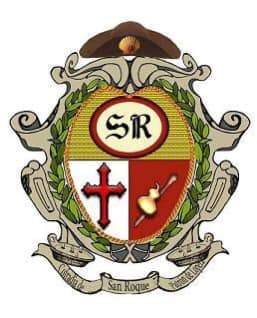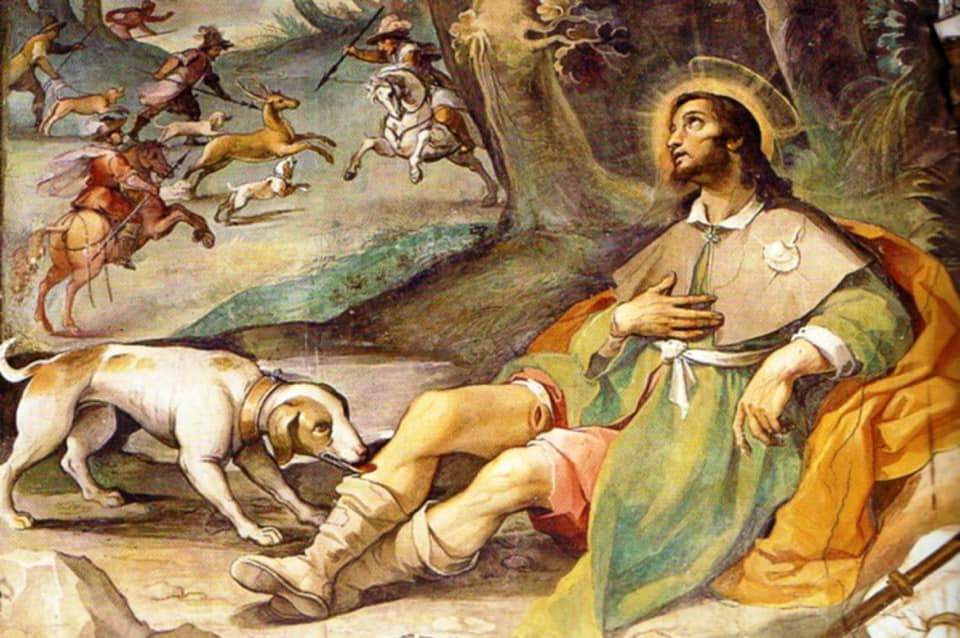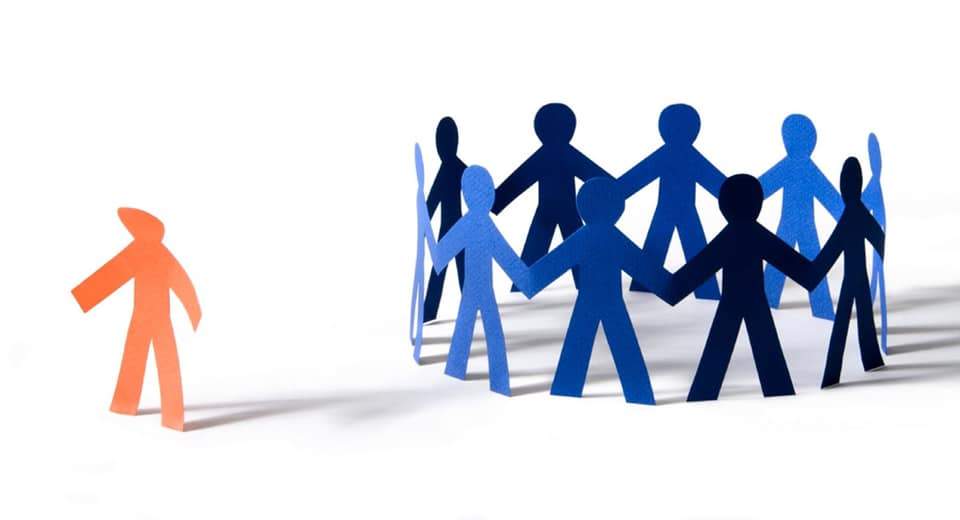OTHERING
August 16, 2020Tinimbang Ka, Ngunit Kulang
August 17, 2020
I know what people in the corporate world understand by CSR—corporate social responsibility. Not bad for San Roque to be associated with such an acronym, no? Perhaps this CSR that we are promoting in the Church can be called our Covid Special Response?
On the feast day of San Roque, I wish to call on young people in all dioceses, especially in parishes named after San Roque, to help us revive the “Cofradias de San Roque” by volunteering to serve as “Health Care Volunteers” to back up our health care workers, especially in quarantine facilities.
I am referring to the care of covid positive patients, not necessarily in the hospitals but in public or private quarantine facilities, including those who have opted for Home Quarantine. We can enter into a partnership with the City, Municipal, and Barangay health officers and assist them in monitoring two kinds of quarantined patients: those without symptoms, and those with mild symptoms. (I hear that in the context of the present Covid Action PLans of LGUs, they are called BHERT, or Barangay Health Emergency Response Teams).
For the moment we are mobilizing volunteers who can do mainly the online monitoring of covid positives because we understand the risk of exposing them to infection if we deploy them to do physical monitoring. The ones we will mobilize for face-to-face monitoring are probably former covid positives who have recovered already and have natural antibodies to fight a reinfection.
We will also welcome currently asymptomatic Covid positive volunteers but we will orient them only online so that they can help in organizing the tasks inside the quarantine facilities, like organizing fellow patients, cooking, cleaning, doing laundry, praying together, etc.
We can have our volunteers trained by city and municipal health care officers, and also have them formally accredited as volunteers, with a proper definition of what they will allowed to do and what they are not allowed to do.
Each volunteer, depending on their capacity and availability, will be assigned a number of patients to monitor and are expected to report the progress of their patients to the accredited health officers in charge of them, on a daily basis. They too can help the attending physician in determining whether or not the patient needs to be brought already to a hospital facility. The idea is to keep as few patients as possible from having to be brought to the hospital so that the hospitals don’t get overwhelmed.
In this regard, I wish our Caritas, in partnership with Globe, Smart, and others Telcos, can assist these volunteers by providing inexpensive or free wifi and cellular data collectively in quarantine facilities and individually for accredited volunteers in order to facilitate efficient online communications with quarantined Covid positive patients.
The volunteers will be organized into cells made up of five to seven individuals led by a cell group leader. The cells will in turn, be grouped into clusters and will have their own cluster leaders. Clusters will be grouped into chapters and chapters into a council. They will meet virtually, once a week, to engage in lectio divina (Bible Prayer Meeting), which we will call VEC (“Virtual Ecclesial Communities”) for their regular spiritual nourishment and business meetings.
They will identify themselves through their emblem printed on San Roque Scapulars or impressed on medallions, or on t-shirts and do their oath-taking before a Cofradia Council of Elders who will work out the close partnership with Barangay, Municipal, and City Health Care officers through a MOA.
As in the Hippocratic oath, the volunteers will be made to swear an oath never to do anything that will cause harm on patients. They will regard themselves, not as professionals, but as volunteers who will assist the professionals. Their main task is to do everything they can to keep the frontline Health Care Workers from getting overwhelmed and burned out, or even dying. They can also be activated for contact tracing.
Those among them who may have recovered from Covid and face less risk of being reinfected may be deployed to provide for the needs of health care workers, like transportation, food, and other forms of assistance, depending on the availability of resources.
Why are we emulating San Roque as our exemplar for this mission? Because it is what he himself did six centuries ago at the age of 20-27. Here is his story:
He was only twenty years old when he lost both his parents. He was a Frenchman from Montpelier, the son of a wealthy merchant and governor of the said city. His father had groomed him to succeed him in his business and political careers. But this young man had other plans for his life. He chose instead to divest himself of his inheritance and turn over the governorship to his uncle in order to fulfill his desire to join the Franciscan friars in Rome.
Like many of the sons and daughters of noble families and merchants, Roque must have read a lot about the romantic stories of people like Francis of Assisi, how they dared to renounce worldly wealth and power in order to follow Christ in a radical way.
Unknown to his parents, he had actually been a member already of the Franciscan Third Order, made up of lay volunteers who backed up either the male or the female consecrated Franciscans. Young people like him had the third order as alternative, if they were not yet ready for the radical life of poverty, chastity and obedience of Francis.
It so happened that around the same time that this young man began his journey to Rome as a pilgrim, an epidemic had struck many of the surrounding cities and was fast turning into a pandemic called the bubonic plague. If the Covid had transfered from bats to humans, this one had transfered from rats to humans. It was a much dreaded disease because it caused what was then called the “Black Death”.
Imagine therefore this young pilgrim suddenly finding himself in the company of many other travelers fleeing from their homes. Since he was relatively young and healthy, instead of fleeing, even if he was a complete stranger, he decided to stay and help out as a health care volunteer in the city of Acquapendente.
What he saw in the hospital of St. John was no different from what is happening nowadays in our own hospitals. But bear in mind that since this is happening long before the age of modern medicine and health care, the hospitals back then were mainly quarantine facilities where the infected ones could be isolated, in order to stem the contagion.
Eventually, at the city of Piacenza, Roque himself would also get infected by the disease. But since he was what today we would call an LSI (locally stranded individual), he could not be admitted in the city hospital facilities even if he had served as volunteer. Why? Because he was not in their list of citizens. Imagine being a stranger from a far away province in a city where he had no relatives and acquaintances and had almost nothing in his possession but his meager provisions as a pilgrim?
Because he was aware that this disease was very contagious, perhaps to avoid infecting more people, he decided to withdraw to a nearby forest, where he found a little shack with nobody in it but a dog. The dog must have sensed in this young pilgrim, not a hostile, but a friendly presence, this animal would do what the humans would not do: welcome a stranger.
But lest we lose our faith in humanity, it is important to note, nevertheless, that the dog Roque had befriended actually belonged to a farmer in a nearby field, who eventually found out that somebody had occupied his shack. I imagine that the farmer was pleasantly surprised to note that his dog was friendly with the stranger. So, instead of driving him away, he allowed him to stay and even took care of his needs, even if he knew that Roque was infected with the disease. He would perhaps be the equivalent of the innkeeper in the Parable of the Good Samaritan.
Roque was just 32 years old when he died—of all places, in a dark prison cell in his hometown in Montpelier. I have a feeling that the retelling of Roque’s story could have been influenced by the popular French legend “Le Retour de Martin Guerre” (The Return of Martin Guerre). And so the last phase of the narrative about him had to do with his decision to return to his hometown when he learned that a war had broken in his native Montpelier. It would not be far-fetched to suppose that the narrative about Roque’s return to Montpelier could have been colored by this popular French legend about a man called Martin Guerre who returned home after many years of disappearance, and could no longer be recognized by his own family.
The story has it that Roque, having been taken for a spy upon his return, was arrested and incarcerated. Even his own uncle, we are told, did not recognize him. I am more inclined to think however, that he had been kept in jail precisely because his uncle had recognize him. Why else would a legitimate heir who had already turned his back on political power and divested himself of his inheritance come back again? I am tempted to think that his uncle had felt insecure about his return—that it could lead to his depositioning by his much younger nephew.
Legend also has it that it was his grandmother who finally recognized him, but only after his death, through his birthmark—a red cross on his chest. And so he was given a noble man’s funeral. And only then, would all the stories become known—about the heroic acts of mercy that he had done in the cities of Acquapendente, Parma, Modena, Cesena, Rome and Piacenza through his volunteer work. Hence , when he was canonized as a saint, he became known as the Patron of the Sick, especially of victims of plagues, epidemics and pandemics.
Decades later, when Europe was struck again by a pandemic, he became the source of inspiration for the establishment of a “Confraternity of San Roque”, made up of lay Catholics whose mission was to back up health care workers—as health care volunteers.
So, instead of just parading San Roque and expecting him to miraculously cure all the covid positive patients in our country while this pandemic is raging, can we do something better? Can we not emulate his example and revive his Confraternities that could do the simple task of helping barangay, municipal, and city health workers administer quarantine facilities and montior both asymptomatic and symptomatic covid positive patients? If the volunteers could also be trained in psycho-spiritual accompaniment, especially when the patients begin to suffer mental health issues while under quarantine, wouldn’t that be even better?
For the moment, this invitation is directed to people who live in any of the cities within Diocese of Kalookan. Volunteers are hereby advised to send a Message the Roman Catholic Diocese of Kalookan FB page Messenger account, identifying your full name, age, educational attainment, civil status, the parish you belong to, plus the Barangay and City where you presently reside.
Any other Parish priest or Diocesan bishop who might be interested in organizing their own CSR can simply copy and paste this in their own parish or diocesan page, with slight revisions according to your own circumstances.










